Digital signatures have become a standard practice, offering a secure and convenient way to finalize agreements and transactions. But to further ensure the integrity and legal standing of these documents, attaching a Certificate of Completion (CoC) is essential.
What is a Certificate of Completion?
The Certificate of Completion (CoC) is a special document that provides key details about a SIGN Request, such as the request ID, name, and originator. It also completes all details of the SIGN Request Audit Trails, listing every audit trail item and the signatures placed. Once created, the CoC PDF is sealed, ensuring it cannot be altered by anyone.
Why is the CoC Important?
Here’s the 7 reason why attaching a certificate of completion to digitally signed documents are important:
1. Proof of Authenticity and Integrity
The CoC acts as a tamper-proof record that confirms the authenticity of the digital signature and the document it’s attached to. It provides a detailed audit trail, including who signed the document and when, ensuring that the document hasn’t been altered since the signing process.
2. Legal Compliance
In many places, digital signatures are legally binding, but they need to meet certain criteria. The CoC helps meet these requirements by providing a comprehensive record of the signing process, including identity verification of the signers and time stamps. This is particularly important in regions with strict compliance standards.
3. Enhanced Security
In a digital landscape full of security threats, the CoC adds an extra layer of protection by embedding critical data about the signing process, like IP addresses and timestamps. These details can be crucial if the document’s authenticity is ever questioned.
4. Increased Transparency and Accountability
Attaching a CoC makes the signing process transparent and helps prevent misunderstandings or disputes. It fosters accountability among the signers, as everyone involved can access a clear record of the entire process.
5. Facilitating Dispute Resolution
If a dispute arises over a digitally signed document, the CoC can serve as vital evidence. Its detailed audit trail can be used to prove the authenticity of signatures and the document in legal proceedings.
6. Streamlining Administrative Processes
For organizations handling many signed documents, the CoC simplifies document management by providing an easy-to-access record that can be quickly reviewed and verified, saving time and effort.
7. Boosting Client and Partner Confidence
When your clients and partners see that you take extra steps to ensure the security and validity of digital transactions, it enhances their confidence in working with you. Attaching a CoC shows your commitment to high standards of security and compliance.
Enabling the CoC
The CoC contains general SIGN Request details, such as the SIGN Request Id, name, and originator. Next to that, all Audit Trail items will be listed in the CoC together with the signatures placed.
The CoC PDF is sealed so it cannot be changed anymore after creation by anyone.
You can enable the CoC on the SIGN Request Template, but keep in mind that a valid license is required for the CoC to be generated. If you don’t have a license, the CoC will be ignored.

Limitation: When enabling the CoC for your SIGN Request, you can include up to 7 signers per request.
Conclusion
Adding a Certificate of Completion to your digitally signed documents is a simple yet powerful way to enhance authenticity, security, and legal compliance. It protects your organization while increasing transparency and trust with your clients and partners. As digital transactions continue to grow, the importance of the CoC will only increase.



